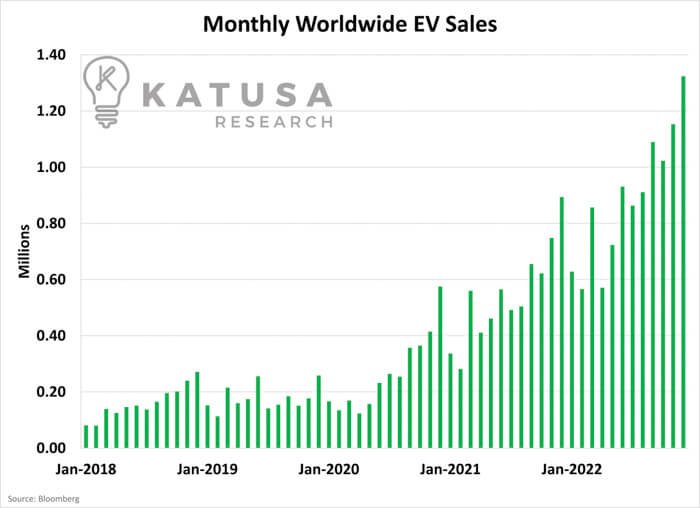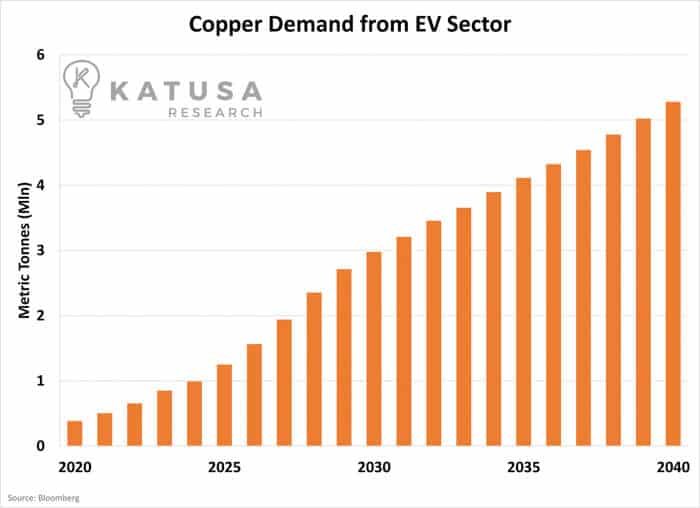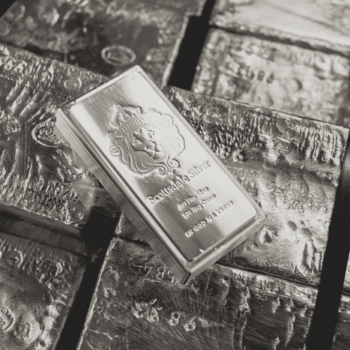
In the high-stakes world of investing, certain assets like gold and Bitcoin often steal the spotlight, dazzling investors with their allure and opportunity for astronomical booms and busts.
Amidst this glitz and glamour, copper, the humble workhorse of the metals market, has been largely overlooked.
Despite its crucial role in driving innovation and powering the green revolution, copper remains an unsung hero – a hidden gem waiting to be discovered by a whole generation of investors.
Especially those in search of a reliable, yet unassuming asset in a constantly shifting financial landscape.
Copper’s Last Two Millenia… for the Millennials
In Roman times, copper played a crucial role in the technological and infrastructure changes.
The Romans used copper extensively in their building and construction projects, as well as in their technological innovations.
It was used in:
1. Water supply systems: The Romans were known for their elaborate water supply systems, which relied heavily on copper piping. These pipes were used to transport water over long distances, and they were often laid underground to prevent contamination
2. Coins: Copper was one of the primary metals used to mint Roman coins. The Romans valued copper for its durability and malleability, which made it an ideal material for coinage.
3. Medical instruments: Copper was also used to create medical instruments, such as scalpels and forceps. The metal’s antibacterial properties made it a popular choice for these tools, as it helped to prevent the spread of infection.
4. Art and decoration: The Romans used copper to create a variety of decorative objects, including statues, vases, and other ornamental pieces. The metal’s warm color and durability made it a popular choice for these applications.
For Romans, copper’s versatility and durability made it an ideal choice for a wide range of applications.
And its value as a commodity helped to drive trade and commerce throughout the empire.
Copper Demand
Nowadays, copper demand has come from real estate, power, transportation, heavy equipment, and infrastructure development.
These sectors are cornerstones to long-term copper demand, but all of these are strongly tied to population growth and global economies, which limits major growth potential.
The key growth opportunities for copper demand over the coming decades will have to come from energy transition and decarbonization. More specifically, energy transition and electrification.
Here are the different segments of copper demand…Old World – This represents current demand and low growth potential.
- Infrastructure, Heavy Equipment
- Real Estate
Modern World – This represents new demand and high growth potential.
- Energy Transition – phase out of inefficient, dirty power generation, transportation, and storage.
- Electrification of Transportation Systems: passenger and commercial vehicles
I am going to focus primarily on the new demand for copper because that is the potential catalyst for a sharp increase in copper prices.
Growth Catalyst #1: Energy Transition
The energy transition is the phase-out of dirty fuels such as coal and natural gas and replaced with zero-emission power sources like solar and wind and nuclear power.
Once very expensive science experiments, wind and solar have rapidly become the lowest-cost power sources in most regions of the world.
Battery storage remains a key concern for intermittent renewable power sources, and over time these costs will continue to come down.
Batteries themselves are not a large driver of copper demand, but in order for wind and solar to be competitive at all hours of the day, high-quality, low-cost batteries are required.
- Today the average onshore wind turbine will use roughly 3,000 pounds of copper per megawatt.
- The big offshore wind turbines use nearly 11,000 pounds of copper per megawatt of power.
- Solar energy also requires considerable copper, both in the array, cabling, and connections. Today solar energy requires 5,000 pounds of copper per megawatt of power.
Below is a chart that shows the projected copper demand from the energy transition toward wind, solar, and battery storage.

The potential growth in copper demand from energy transition is nothing short of significant. Within a decade, new copper demand could represent close to 50% of current copper production.
Growth Catalyst #2: Electrification of Transportation Sector
The second key growth sector for copper is in EVs.
Regardless of whether you hate Elon Musk or love him, it’s hard to argue against the fact that Tesla has played an integral role in the electric vehicle world. Electric vehicles (EV’s) have soared in popularity, in part driven by lower costs and improved government subsidy programs.
Even in the face of a slowing economy, EV sales continued to hit records, surpassing over 1 million monthly sales 4 consecutive months in a row last year.
You can’t go anywhere in a major North American city without seeing a Tesla on the road.

As EVs continue to gain popularity and truly become the norm, copper demand from EVs is poised to grow massively.
- A light-duty EV requires 130 pounds of copper on average.
- A medium-duty EV requires 300 pounds of copper on average.
- A heavy-duty EV requires 900 pounds of copper on average.
Then you need to tack on the charging infrastructure, and of course, you need to hook it up to the grid. All of this needs copper.
EV sales are expected to continue their parabolic growth trajectory over the coming decades. This paves the way for another avenue for meaningful copper demand growth.
The chart below shows the expected demand for copper coming from EVs and charging units.

Calling All Copper Bugs
The growth potential for copper in the energy transition and electrification sectors is immense, and as innovations in wind, solar, and battery storage technologies continue to advance, the demand for this versatile and durable metal will only increase.
As a result, we can expect a significant impact on copper prices, driven by these emerging markets and the ever-growing push towards a decarbonized world.
Every single demand and supply chart you see is going up and to the right.
In light of this, investors and industry stakeholders must recognize the crucial role that copper will play in shaping our global energy landscape.
If you don’t own any copper companies in your portfolio, start doing some diligence.
But maybe you don’t have the time or expertise – and that’s fine, we’ve got you covered.
I’m working on deep diligence on a few copper-related opportunities coming down the pipe. And subscribers to my premium research – Katusa’s Resource Opportunities – will get first access to my ideas.
Unlike other newsletters, you’ll get to see where I’m actually putting my money to work – and at what price.
Regards,
Marin Katusa
Details and Disclosures
Investing can have large potential rewards, but it can also have large potential risks. You must be aware of the risks and be willing to accept them in order to invest in financial instruments, including stocks, options, and futures. Katusa Research makes every best effort in adhering to publishing exemptions and securities laws. By reading this, you agree to all of the following: You understand this to be an expression of opinions and NOT professional advice. You are solely responsible for the use of any content and hold Katusa Research, and all partners, members, and affiliates harmless in any event or claim. If you purchase anything through a link in this email, you should assume that we have an affiliate relationship with the company providing the product or service that you purchase, and that we will be paid in some way. We recommend that you do your own independent research before purchasing anything.






